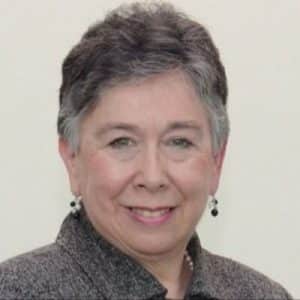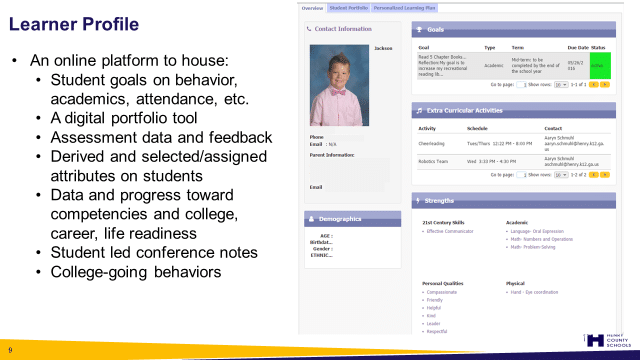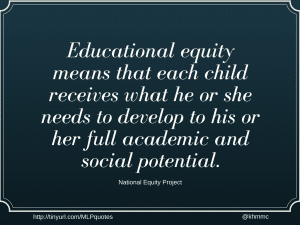Understanding the Pedagogy of a Learning Science to Nurture an Inclusive Learning Culture
CompetencyWorks Blog

Creating a culture of learning and inclusivity, a non-negotiable for competency-based schools, is a tall order for most K-12 public school systems. As schools move from a traditional system to a personalized, competency-based system, we need to evaluate the tools we have used around learners and learning and teachers and teaching, and understand how a learning science can be used to nurture and build a culture of learning and inclusivity. One approach that is based on research in the learning sciences and that has been around for over 25 years is Universal Design for Learning (UDL).
The question is: What does it really mean to use a UDL lens? This three-part series explores how Universal Design for Learning can strengthen teaching and reinforce a culture where every learner feels that they are valued, belong, and is learning.
Universal Design for Learning (UDL)
Universal Design for Learning (UDL) is an educational framework based on research in the learning sciences, including cognitive neuroscience, that guides the development of flexible learning environments that can support the variability of learning in the classroom. Recognizing this variability in the way learners learn, the UDL framework was first defined by David H. Rose, Ed.D. of the Harvard Graduate School of Education and the Center for Applied Special Technology (CAST) in the 1990s. It called for creating curriculum and instruction from the onset that provides:
- Multiple means of representation to give learners different ways of accessing information and processing it into usable knowledge,
- Multiple means of expression to provide learners ways to express what they know and understand, and
- Multiple means of engagement to use a learners’ interests, talents, and passions to engage them in content and concepts and motivate them to learn.
These three principles noted above parallel the Russian psychologist Lev Vygotsky’s three essential processes for learning. These processes include “recognition of the information to be learned; application of strategies to process that information; and engagement with the learning task” (Vygotsky, 1962).
From this early work at CAST on UDL, these three principles of UDL are used today along with a set of UDL Guidelines that can support schools and educators to universally design curriculum and instruction that addresses learner variability at the beginning of the design or planning effort. The UDL Guidelines are designed to assist educators to develop curriculum goals, methods, materials, and assessments that would guide the design of learning environments and experiences that would reduce the barriers to learning and maximize the levels of support and challenge to all learners.
In December 2016, the Every Student Succeeds Act (ESSA) defined and endorsed UDL as “a scientifically valid framework for guiding educational practice” and to personalizing learning—stating that it provides flexibility and supports for all learners and reduces barriers in instruction. ESSA calls on states and districts to incorporate principles of UDL in assessment design and technology adoption. As of September 2017, the majority of states have incorporated Universal Design for Learning into their ESSA State Plans. The question is: Where do states and districts begin to use the UDL principles in practice to create an inclusive learning culture?
The UDL Lens of Access, Engage and Express: Bringing Research to Practice
The UDL principles can serve as a framework for curriculum and instruction, but how can we take UDL that is grounded in the learning science and use it in daily practice to create a culture of inclusivity? To develop an inclusive learning environment, a common language needs to be used by everyone in the school. New terms were developed for the UDL principles in 2012 by the co-founders of Personalize Learning, LLC* who introduced the UDL Lens of Access, Engage, and Express**. Using these terms around the UDL principles would give everyone in the school culture a way to have daily conversations about learners and learning, instructional methods, materials, and assessments. Above all, it would build an understanding and appreciation of the variability that each learner has in their learning.

From the learner’s perspective, the UDL Lens of Access, Engage and Express in a Learner Profile would give him or her an opportunity tell their story of who they are and how they learn to:
- share their strengths, challenges, preference and needs in how they access and process information, engage with content and concepts, and express what they know and understand;
- express their interests, talents, aspirations and passions;
- set learning goals and actionable plans with teachers to support a challenge or enhance a strength; and
- have regular conversations about their learning with teachers, peers, and parents.
One important outcome of learners’ telling their story using the UDL Lens is that they feel valued. For teachers, understanding their learners can inform their daily practice so materials, methods, and assessments are more effective. Finally, the UDL Lens becomes an essential tool to create an inclusive learning culture that supports a school’s values and beliefs where relationships are built on trust and respect.
Creating an Inclusive Learning Culture with Educational Equity at the Center
 “Educational equity means that each child receives what he or she needs to develop to his or her full academic and social potential. – The National Equity Project
“Educational equity means that each child receives what he or she needs to develop to his or her full academic and social potential. – The National Equity Project
As defined in the Culture Design Principles, found in the seminal report Designing for Equity: Leveraging Competency-Based Education to Ensure All Students Succeed, “A school’s culture is the daily manifestation of its core beliefs; adults’ beliefs about themselves and their students; students’ beliefs about themselves and the adults around them…”. With the first design principle of equity, the question is: “How can we create an inclusive learning culture with equity at the center?” Here are some thoughts on where to begin:
- If equity is to be realized so that it becomes the center of an inclusive learning culture in a competency-based system, then all the stakeholders in a school community need to lay a foundation of a shared vision and a set of beliefs around learner and learning, teachers and teacher and the learning community.
- Empower each learner (including teachers and administrators) to discover who they are as learners (strengths, challenges, preferences and needs) using the UDL Lens of Access, Engage and Express so they can become “self-aware, effective learners.”
- Create opportunities to have conversations to develop meaningful relationships between teacher and learner and between learner and learner.
- See everyone in your school as a learner.
- Value every learner!
To achieve equity in an inclusive learning culture, values, beliefs, and practices need to understood and applied daily by every learner. The first step is to begin.
—
* The co-founders of Personalize Learning, LLC: Kathleen McClaskey and Barbara Bray (2012-2017).
** The UDL Lens of Access, Engage and Express is a trademark of Kathleen McClaskey.
Universal Design for Learning is a registered trademark of CAST, Inc.
References
How Has UDL Been Defined? (2013, April 17). Retrieved January 10, 2018, from http://www.udlcenter.org/aboutudl/udldefined.
Lopez, N., Patrick, S. and Sturgis, C., Designing for Equity: Leveraging Competency-Based Education to Ensure All Students Succeed, 2018.
Personalization and UDL: The Perfect Match. ASCD Educational Leadership, March 2017.
The Three Principles. (2014, September 18). Retrieved January 11, 2018, from http://www.udlcenter.org/aboutudl/whatisudl/3principles.
UDL in the ESSA. (2016, February 17). Retrieved January 10, 2018, from http://www.cast.org/whats-new/news/2016/udl-in-the-essa.html#.WmeFPFVG3wc.
Vygotsky, L.S. (1962). Thought and Language. Cambridge, MA: MIT Press. (Original work published in 1934).
Kathleen McClaskey is Founder of Make Learning Personal, Co-founder of Personalize Learning, LLC and co-author of bestsellers Make Learning Personal and How to Personalize Learning. She is an innovative leader, education technologist, professional developer, and a Universal Design for Learning (UDL) consultant with over 30 years experience in creating learner-centered environments as a teacher, K-12 administrator and consultant. During this time, Kathleen has presented at national and international conferences on the topics of personalized learning, UDL, learner agency, equity and self-advocacy and is actively involved with Education Reimagined’s Pioneer Lab. She continues on her mission for educators everywhere to discover the learner in every child. You can follow her on Twitter @khmmc or visit her website and blog.